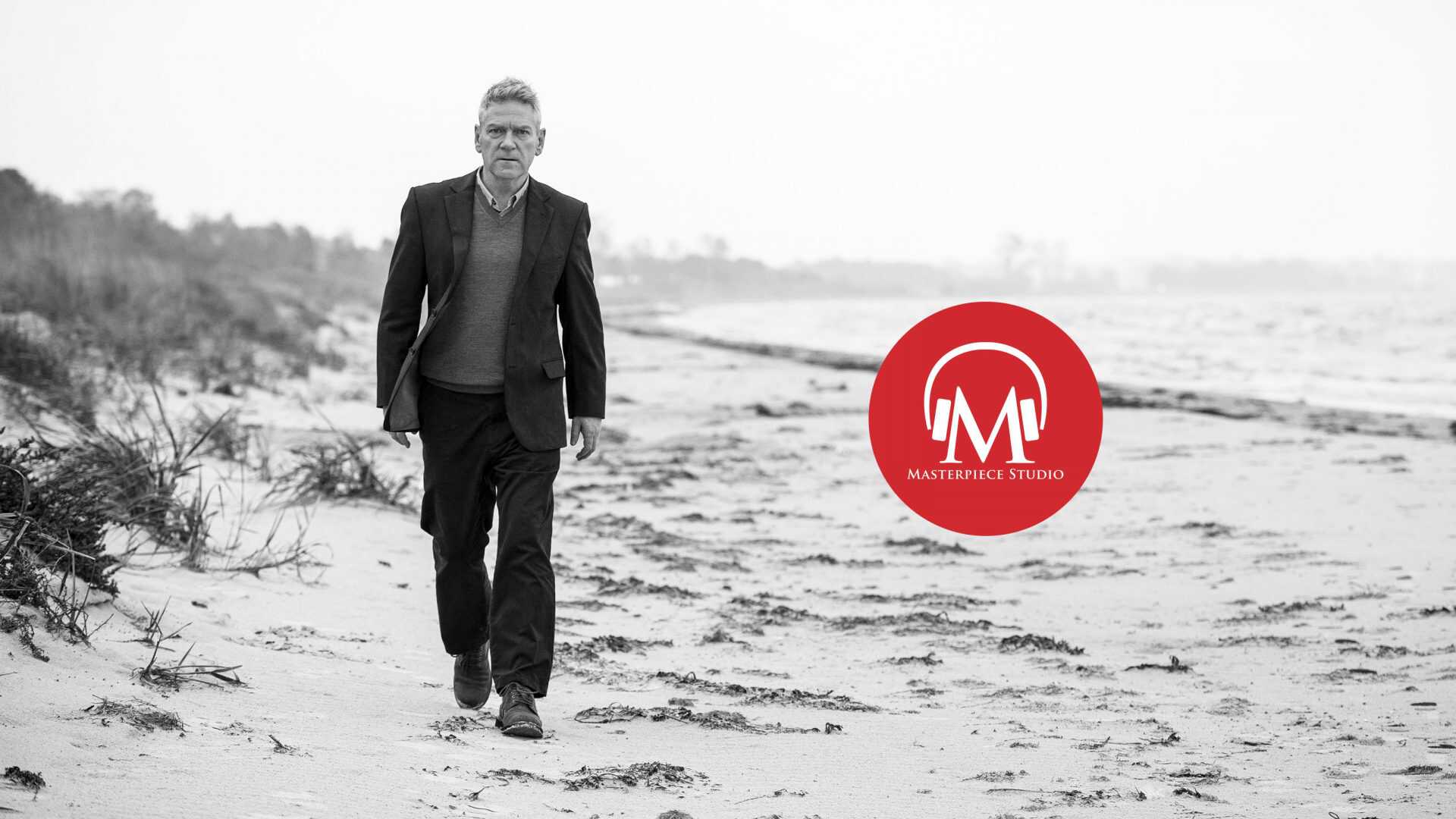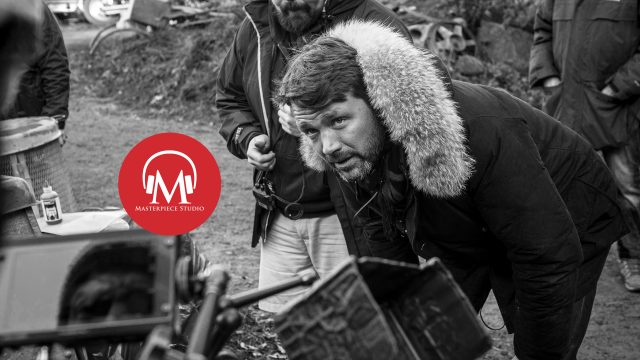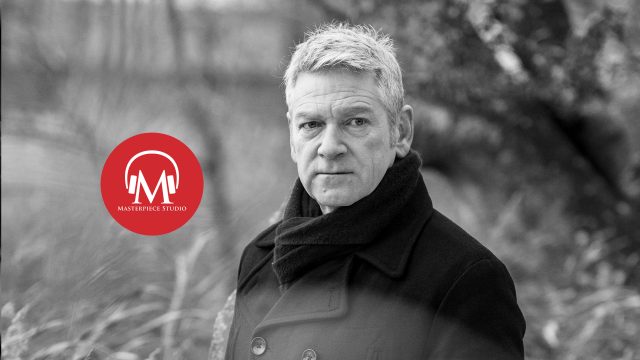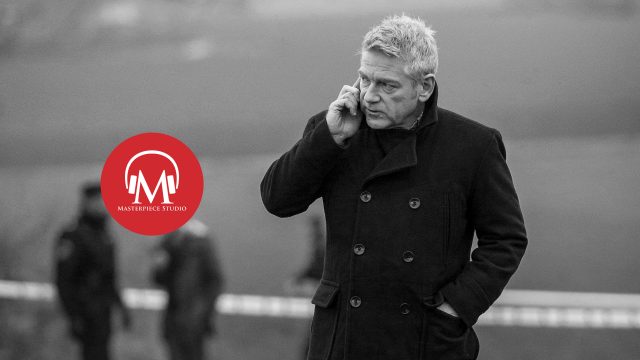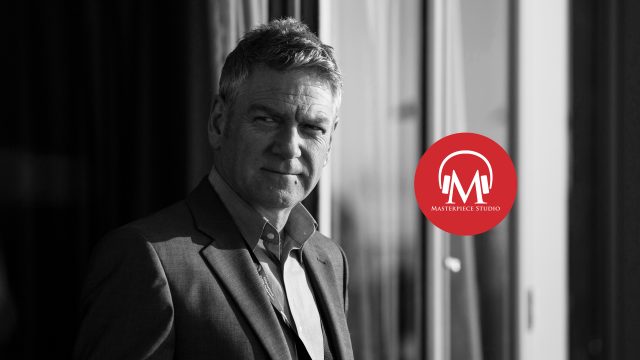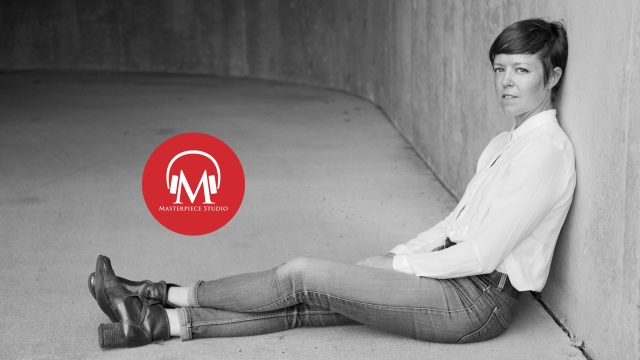Jace Lacob (Jace): MASTERPIECE Studio is brought to you by Audible. For a free trial, go to Audible.com/Masterpiece.
I’m Jace Lacob and you’re listening to a bonus episode of MASTERPIECE Studio.
Though the Nordic countries — including Denmark, Sweden, Norway, Finland, and Iceland — consistently sit at the top of almost every global ranking, Nordic Noir novels, films and television shows try to expose the darker side of Scandinavian society.
Nordic Noir also tends to focus on crime investigations and has…
CLIP:
Andrew Nestingen: …emotionally struggling protagonists.
Jace: That’s Andrew Nestingen, Professor of Scandinavian Studies at the University of Washington and expert on all things Nordic Noir.
Like the perpetually moody Kurt Wallander, the main characters in other Nordic Noir dramas — and their English adaptations — have their own emotional baggage and — as their devoted fans know — their own defining symbols.
In The Killing — or Forbrydelsen — there’s Sarah’s sweater. In The Bridge — or Broen — there’s Saga’s leather pants, and in Wallander, there’s even Kurt’s ringtone…
CLIP:
[Kurt Wallander’s Ringtone]
Jace: In all his Nordic Noir glory, Kurt Wallander — and his ringtone — return to MASTERPIECE one last time on May 22th.
But before they do, Professor Andrew Nestingen joins us on the podcast to make sense of Wallander, Nordic Noir, and its influence.
Jace: Welcome.
Andrew: Thanks, pleasure to be with you.
Jace: What are the main concerns of Nordic Noir shows, and what elements make it distinct as a genre from say standard American procedural crime dramas?
Andrew: Well one of the key realizations about Nordic Noir is the role of victimization. Perpetrators in Nordic Noir are almost without exception themselves victims, and their victimhood then explains their crimes.
CLIP:
Detective: Boy’s name is Victor Mabasha. Member of the 26s.
Grace: It’s a prison gang.
Detective: Interviewed in 2012 about the murder of a prison guard; his initiation into the 26s. No charge. Lack of evidence.
Kurt: And what else?
Grace: Well he’s nothing big. A foot soldier.
Kurt: Well he’s just a kid isn’t he.
Grace: They’re all just kids. I mean they don’t live long enough to grow up.
Jace: In contrast in American crime fiction it’s often evil that lies at the heart of crime, and so culturally we have to punish the evil. And how do we do that? You know, like the (laughs) the iconic figures like a Dirty Harry, you know, who comes and…It’s not only that he dishes out justice right, but he does it with a sort of a viscous style that calls to mind a whole variety of notions of American justice: sort of masculinity, the past, the western, these kinds of things.
I think that in Nordic Noir what you have is a sense that everyone should have access to a normal life, and it’s a failure on a part of the system when things happen to people in their youth or at some impressionable part of their life that knock them off the track.
CLIP:
Victor: My mother was killed by witchcraft. My uncle took me into to city, to his friends, so I could have a second chance.
Andrew: So I think that’s the difference is that it’s victimhood that leads to crime in the Nordic Noir stuff. Whereas there are– Pathological evil oftentimes is the explanation of crime in the American tradition.
Jace: Wallander creator Henning Mankell has said that Wallander’s popularity skyrocketed when he gave him diabetes.
CLIP:
Kurt: Diabetic? I can’t believe this. I’ve got diabetes?
Doctor: Well, it’s not full-blown, no. Type 2. Look after yourself a bit better. You should be fine. Talk to your doctor, though, as soon as you can.
Kurt: What about the fainting?
Doctor: Easy now.
Kurt: I’m all right.
Doctor: People with type 2 often develop a condition called hyperosmotic non-ketotic acidosis…HONK.
Jace: That to me made him inherently more human and perhaps relatable. Does that fit in with that trend?
Andrew: Yeah, absolutely. Mankell was very smart about the way that developed that character. I mean there’s just…You have to really admire him for the thoughtfulness of his choices, but also the kind of genius of many of them. For example, Mankell mentions that, “Oh I asked a friend what’s the most common disease among people of that age in Sweden, and he said, ‘Oh you know it’s diabetes’ or whatever.”
And I think there you see an example of a real emphasis on the everyday and the normalcy that makes him relatable.
CLIP:
Kurt: Apparently, I’m diabetic. How sad is that, ay? I’ve got hyperosmotic non-ketotic something or other…HONK.
Isa: HONK? You’ve got something called HONK?
Kurt: It’s actually quite serious. Yeah, it’s not funny.
Isa: HONK?
Kurt: Yeah, all right.
Isa: (Laughs)
Andrew: I think it, it also works pretty well narratively, you know, where’s he always having some ice cream or hot-dogs or whatever. You know, that’s a struggle that’s probably familiar to a lot of people where you have good intentions about you’re going to do during the day, and then you don’t live up to those intentions and fall short in your own, you know, self-discipline. Wallander’s a good model in that way. He, he…or I should say an interesting model.
He sort of has his failures, and as you say that makes him much more human, and much more…It’s easy for the viewer to empathize with him.
Jace: Why do you think that that has become such a common feature of the genre?
Andrew: Well one reason for sure is the history of the Scandinavian police procedural of the Nordic noir, which really goes back to 1965 and this pair of writers, Maj Sjöwall and Per Wahlöö. Their protagonist, Martin Beck, was the investigator in 10 novels, and Beck has these sorts of bodily problems and emotional problems. And that character really resonated with many readers in has since been adapted many times for television.
So I think that’s part of it. The second reason might be that that personalization of really complex problems that sort of no one can really understand.
So for example like Wallander, his emotional struggles, the stress and so forth, they’re, you know, a direct consequence of changes in the state, which you could say are part of broader changes in the ways that Sweden has organized itself politically.
Jace: So the micro sort of mirrors the macro.
Andrew: Exactly, well put.
Jace: Now countries of Scandinavia are often seen as being extremely tolerant, but Nordic Noir authors like Jo Nesbo, Steig Larson, and Henning Mankell have sought to look at what’s behind that mask of public welfare.
What might American audiences not realize about the political structure of these countries?
Andrew: For sure in Wallander, the important political connection is Kurt Wallander’s nostalgia. He’s a 1970s social democrat, and he expresses that nostalgic sort of sympathy for the 1970s Swedish welfare state.
It’s a beautiful sort of political dream right, when everyone got along and everything was happy, and before the oil crises, and various sorts of troubles began for the welfare state.
So Wallander, you know, looks back to that, oftentimes and some of the brooding and the emotional style of Wallander seems to be longing an earlier moment. He’s very uncomfortable and doesn’t know quite how to respond to the present to computer technology, to interconnection on a global level, the kinds of things that define the contemporary world of multiculturalism and so forth that are really defining things today. And have a tough time fitting with the, you know, the Nordic states.
Jace: The UK has had a real appetite for Nordic Noir shows, and more recently American TV networks have attempted adapting those shows like The Killing, The Bridge, Borgen, Those Who Kill, to name a few. Why does Nordic Noir continue to exert such a pull on the imagination of both viewers and television executives do you think?
Andrew: If I had the answer I would do it myself. (Laughs) You know, it’s yeah…
I think one of the important parts of that explanation is that it fits in a niche in western entertainment, you could say. And that is, it’s well written high quality drama for adults. And at the same time it’s serious.
You know, the crime novel and the crime show, they’re also a very conservative form in that things go wrong order is lost, but ultimately it’s recovered again and things are put back to the way they were.
And I think that you couple that with a very strong sense of locality and often very beautiful images of, especially in Wallander, of southern Sweden and so forth is attractive. And I think it resonates with a lot of viewers who find it, you know, thought provoking and interesting.
Jace: If you had to choose between the English language Wallander and the Swedish language Wallander, do you have a favorite?
Andrew: I would go for the English language Wallander with Branagh.
I think for our age of globalization that the hybrid character of the English language one is in a way truer to the project by which I mean we don’t live in a world of authenticity and purity these days. We live in a world of mixes and hybrids, and…I find the English language one to be more interesting.
Jace: What lesson can readers and viewers ultimately take away from Nordic Noir-fare?
Andrew: Nordic Noir shows us that behind every criminal act there’s a story. Everyone has their reasons, and I think that’s the lesson.
Jace: I like that. As Kurt Wallander might say, Andrew Nestingen, “Tack så mycket.”
Andrew: Tack själv.
Jace: Thank you.
Jace: You can listen to past episodes of the MASTERPIECE Studio podcast — including our interviews with the cast and crew of Grantchester and Downton Abbey — at pbs.org/masterpiece.
You can also find us on iTunes and Stitcher where you can subscribe to the show and leave us a review! Your reviews help us to move up the charts — which makes it easier for others to find the podcast — and they let us know what you think of the show.
MASTERPIECE Studio is hosted by me, Jace Lacob. Kathy Tu is our editor. Rachel Aronoff is our production coordinator. Special thanks to Barrett Brountas and Nathan Tobey. The executive producer of MASTERPIECE is Rebecca Eaton.
MASTERPIECE Studio is brought to you by Audible.
Sponsors for MASTERPIECE on PBS are Viking River Cruises, Audible, and The MASTERPIECE Trust.








